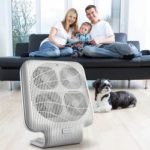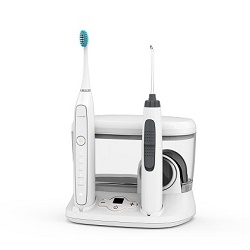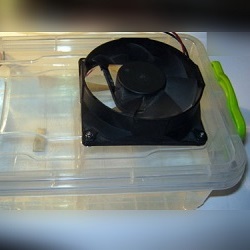What is the difference between an ionizer and an ozonizer?
These two devices are quite similar to each other, moreover, not only externally, but also on the principle of operation and design features. Ionizer, ozonizer are equally equipped with electric generators, which emit electrical charges, but purify the air in different ways. Many people only know firsthand about these devices, but not everyone is familiar with their actions, not everyone understands the difference between them. What is their difference, what are they intended for? Are they harmful from a medical point of view?
Content
Mode of action of ozonizers
The action of ozonizers is to use the ozone oxidizing ability, which, when interacting with bacteria and viruses, can turn to ordinary oxygenwhile neutralizing all harmful substances. Strong electrical discharges from the generator are fed to the tip of a special needle, as a result of which ozone arises, the saturation of which can be adjusted. Moreover, the greater this power, the higher will be the concentration of ozone.
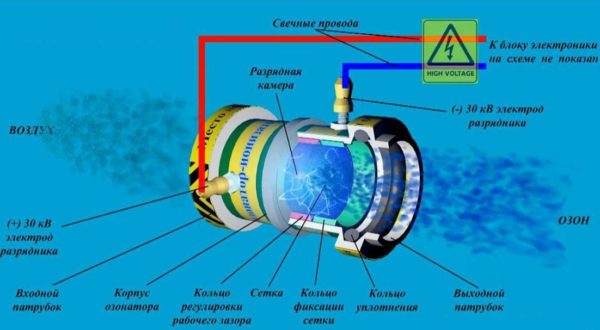
Ozonizer Design Diagram
Electric ozone generator and ozonizer are able to destroy at the molecular level:
- Various dirt and dust.
- Viral infections.
- Pathogens.
- Different microbes.
These devices are used for such purposes as:
- Disinfection of surfaces of various objects.
- Remove unpleasant odors.
- The destruction of viruses, microbes.
- Freedom from moths, bedbugs.
- Purification of water.
Considering ozonizers, it should be noted that these devices have, rather,medical action. They are successfully used in hospitals, but there are also household devices that clean the air from bacteria and viruses.
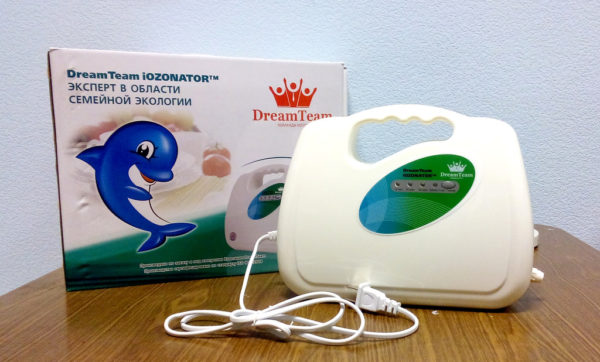
It is desirable to turn on the device during the absence of people and animals in the room, for about 2-3 hours.
The principle of operation of ionizers
In these devices, the electric charges produced by the generator are directed to a tungsten filament or a special plate.As a result of this action, new ions are born, chargedoxygen atom. And the higher the concentration of such ions, the better and fresher the indoor air will be.
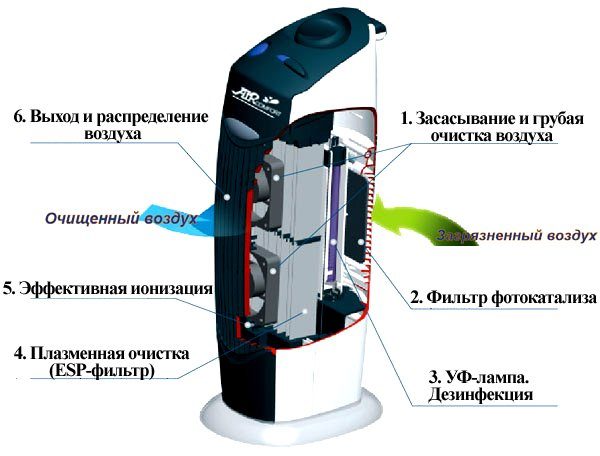
How does the ionizer (scheme)
Such ionizers are designed to improve airspace quality. They are not able to crush germs at their level, bacteria, as is the case with ozonizers, but they can purify the air well, as well as:
- Fight against allergens and dust.
- Charge oxygen molecules with ions.
- Protect against viral diseases, preventing germs from multiplying.
- Remove bad odors.
- Destroy various viruses.
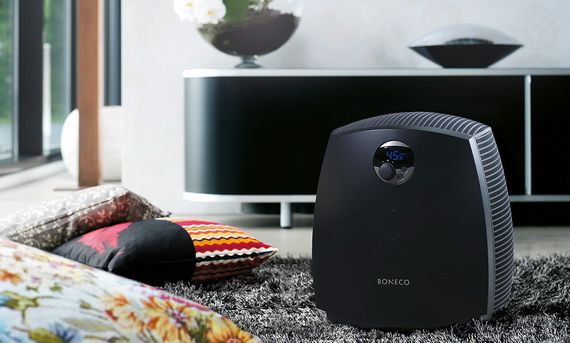
Ionizers are mostly health-improving devices, in contrast to ozonizers that perform disinfectant tasks.
What is better - ozonizer or ionizer
Many people are bewildered by the smell of ozone given off by both instruments: they identify them. But in fact, the smell of ozone in ionizers manifests itself as a side effect and in low concentration. While ozonizers can affect not only microbes, but also on the human body. For this reason, it should be used in empty rooms.
Their difference is also manifested in the application, namely:
- Ionizers serve more for air purification. They are capable of emitting up to 10 thousand negative microparticles per second, which is comparable with sea or mountain air. In such air space it is easier to breathe, it works more productively. And you can turn them on regardless of whether people are in the room. With their action, the nervous system is toned, stress is removed, aging is slowed down.
- Ozonizers are irreplaceable where there is often ill children bringing from school or kindergarten various viruses, infections. They are good to use when used in the decoration of apartments annoying or allergenic materials. But it is better to turn on these devices in the absence of people in the room.
Ozone is extremely in demand if you need to get rid of various viruses and bad smells. And ions contribute to improving the quality of clean air.Now, by the way, models of universal properties have become quite popular, so to speak. two in one. Such a universal ionizer-ozonizer is capable of producing both ions and ozone. Moreover, according to experts, it is necessary to carry out the ionization of air only after its purification.
Universal ozonizer ionizer
The device is air injected. in a special chamberwhere he, going through the process of decomposition of its elements and purification, is further saturated with ions and continues the purification of the room itself. Such universal cleaners have a number of advantages:
- Air purification is carried out continuously.
- Smells, dust, any tobacco smoke are eliminated.
- The quality and freshness of the air improves.
- There are no filters.
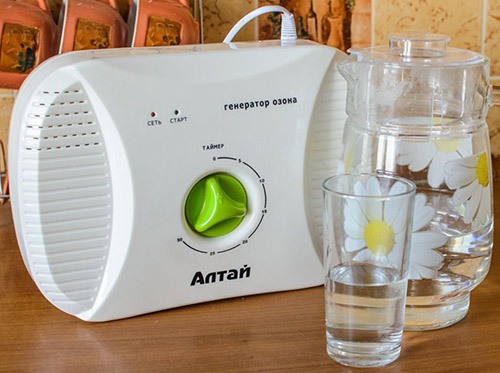
How to use ozonizers
Since ozone is considered to be a rather poisonous gas, the use of these devices should be extremely careful. There is no reason to rely on your sense of smell (the smell of ozone appeared, which resembles a "smell of thunderstorm"), as this signals a large concentration of gas in the room. It is simply recommended to disinfect with its use in the absence of people in the room, and then thoroughly ventilate it.
When choosing a household appliance, you should consider:
- The area of its application.
- Performance (for home use small enough indicators).
- How long the device is able to work without interruption.
- The presence of functional additions (timer, choice of operating mode, etc.).
When using it, you must adhere to rules specified in the instructions for the device, for example:
- It is recommended to install ozonizers above the surface to be treated, or simply on a flat solid surface to process the entire space.
- Organize a mandatory flow of fresh air.
- Connect the power cord to the outlet, select the mode and time of the device.
- After 2-3 hours of operation of the device, be sure to ventilate the room for at least 15 minutes.
How to use ionizers correctly
These devices can be used. when finding people indoors, and the closer it is installed, the faster its refreshing effect will be felt. Proper care of it is very important, since during the operation of the device there may be a lot of dust on it, which must be cleaned first with a wet and then a dry cloth.
For more effective action, you must first thoroughly ventilate the room and only after that (closing all windows) turn on the ionizer.
Who can use home ionizers:
- Children, especially before and during seasonal exacerbations of ARVI, flu, etc.
- All users of the computer.
- To fanatics of television programs that spend more than 2-3 hours a day at TV screens.
- People who are forced to stay indoors for a long time.
Both the ozonizer and the ionizer fight air pollution, bacteria, fungi and microbes. But each of them acts according to a different principle, performing certain tasks.

/rating_off.png)






